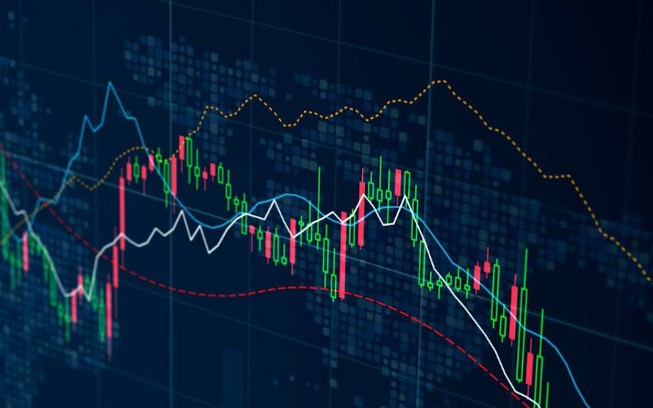Mastering Forex Day Trading Strategies, Tips, and Tools 1807864782

Mastering Forex Day Trading: Strategies, Tips, and Tools
Forex day trading is a popular method for capitalizing on the fluctuations of currency pairs within a single trading day. For those who are new to the concept, forex day trading ZAR Trading can be an exemplary starting point to understand the mechanics behind this lucrative endeavor. Day trading involves making numerous trades throughout the day, with the goal of ending each trading session without any open positions. This strategy allows traders to avoid risks associated with overnight exposure and capitalizes on short-term market movements. In this comprehensive guide, we will delve into the core principles of forex day trading and provide you with essential strategies and tips that can enhance your trading performance.
What is Forex Day Trading?
Forex day trading refers to the practice of buying and selling currency pairs within the same day. Unlike long-term traders who may hold positions for weeks or months, day traders generally open and close their trades within the same day. This trading style is characterized by high trading volumes and a focus on short timeframes, with potential profits derived from minute price movements.
The Psychology of Day Trading
Successful day trading goes beyond merely executing trades based on charts and indicators; it also hinges on the trader’s psychology. Trader emotions such as fear and greed can significantly impact decision-making, often leading to impulsive trades or irrational losses. Developing a disciplined mindset is crucial for maintaining consistency and achieving sustainable profits in forex day trading.
Essential Tools for Forex Day Trading
To navigate the dynamic world of forex day trading effectively, traders require specific tools and resources. Here are some essential tools you’ll need:
- Trading Platform: A reliable trading platform is vital for executing trades quickly and accessing essential charting tools.
- Market Analysis Tools: Utilize technical analysis tools such as moving averages, RSI, Bollinger Bands, and Fibonacci retracements to help identify trading opportunities.
- Economic Calendar: Stay informed about upcoming economic events that can cause significant volatility in currency pairs.
- Risk Management Software: Help manage your risk and minimize potential losses with stop-loss and take-profit orders.

Developing a Trading Plan
Your trading plan is your roadmap for success. It should outline your trading goals, risk tolerance, strategies, and rules for entering and exiting trades. A well-thought-out trading plan can help you stay focused and disciplined during your trading sessions. Here are some factors to consider when developing your plan:
- Define Your Goals: Establish what you want to achieve through day trading, whether it’s a specific income target or skill development.
- Risk Management: Determine how much capital you are willing to risk on a single trade and your overall trading account.
- Time Commitment: Assess how much time you can dedicate to trading each day, knowing that day trading often requires constant monitoring of the markets.
- Trading Strategy: Choose a strategy that suits your trading style, such as scalping, momentum trading, or breakout trading.
Common Day Trading Strategies
Here are several popular strategies employed by day traders in the forex market:
1. Scalping
Scalping involves making numerous small trades throughout the day, typically holding positions for just a few seconds or minutes. Traders capitalize on small price movements and aim for quick profits.
2. Momentum Trading
Momentum traders look to capture trends and price movements. They enter positions when they identify strong momentum in a particular direction and aim to ride the trend until it shows signs of reversal.

3. Breakout Trading
Breakout traders focus on levels of support and resistance. When the price breaks through a key resistance or support level with increased volume, traders will enter positions in the direction of the breakout, anticipating continued movement.
Risk Management in Day Trading
Effective risk management is crucial for day traders, as it can mean the difference between success and failure. Here are some strategies to help manage risk:
- Set Stop-Loss Orders: Always use stop-loss orders to limit potential losses on a trade.
- Use Position Sizing: Determine the appropriate position size based on your capital and risk tolerance, ensuring that no single trade risks a large portion of your account.
- Diversify Your Trades: Avoid concentration risk by trading multiple currency pairs instead of putting all your capital in a single pair.
- Avoid Over-Leveraging: While leverage can amplify profits, it can also magnify losses. Use leverage judiciously.
Continuously Improve Your Trading Skills
The forex market is ever-changing, and successful day traders must adapt to new conditions and trends. Continuously seek to improve your trading skills by:
- Reading books and articles on trading strategies.
- Participating in trading forums and communities for knowledge sharing.
- Tracking and reviewing your trading performance to identify strengths and weaknesses.
- Practicing on demo accounts to hone your skills without risking real capital.
Conclusion
Forex day trading offers a thrilling opportunity for traders looking to capitalize on short-term price movements. By understanding the fundamentals, developing a solid trading plan, implementing effective risk management, and continuously improving your skills, you can increase your chances of success in the fast-paced world of day trading. Remember, patience, discipline, and adaptability are key traits of successful day traders. Start your forex day trading journey with the right mindset and tools, and you’ll be well on your way to achieving your trading goals.

